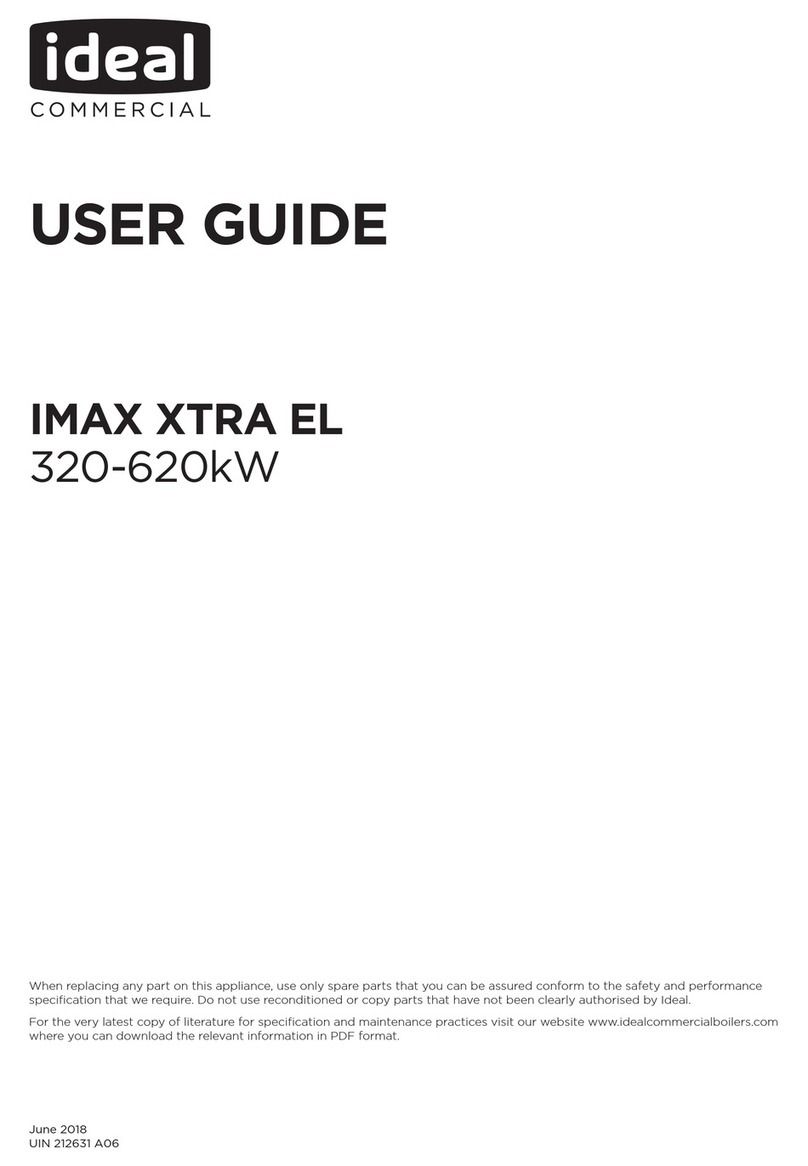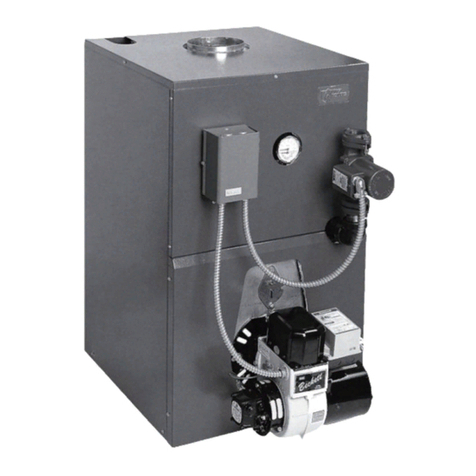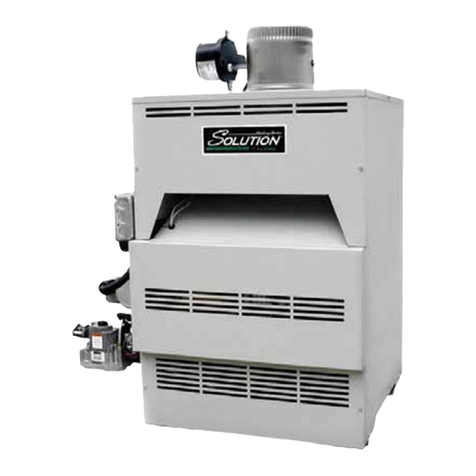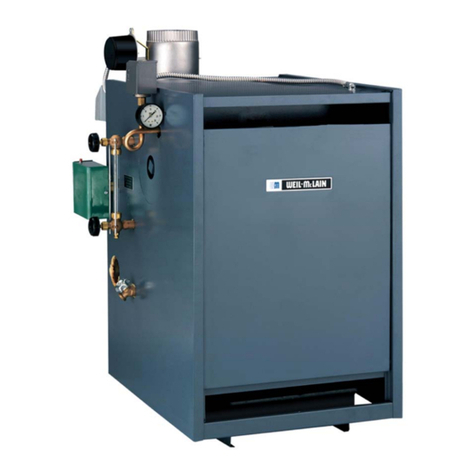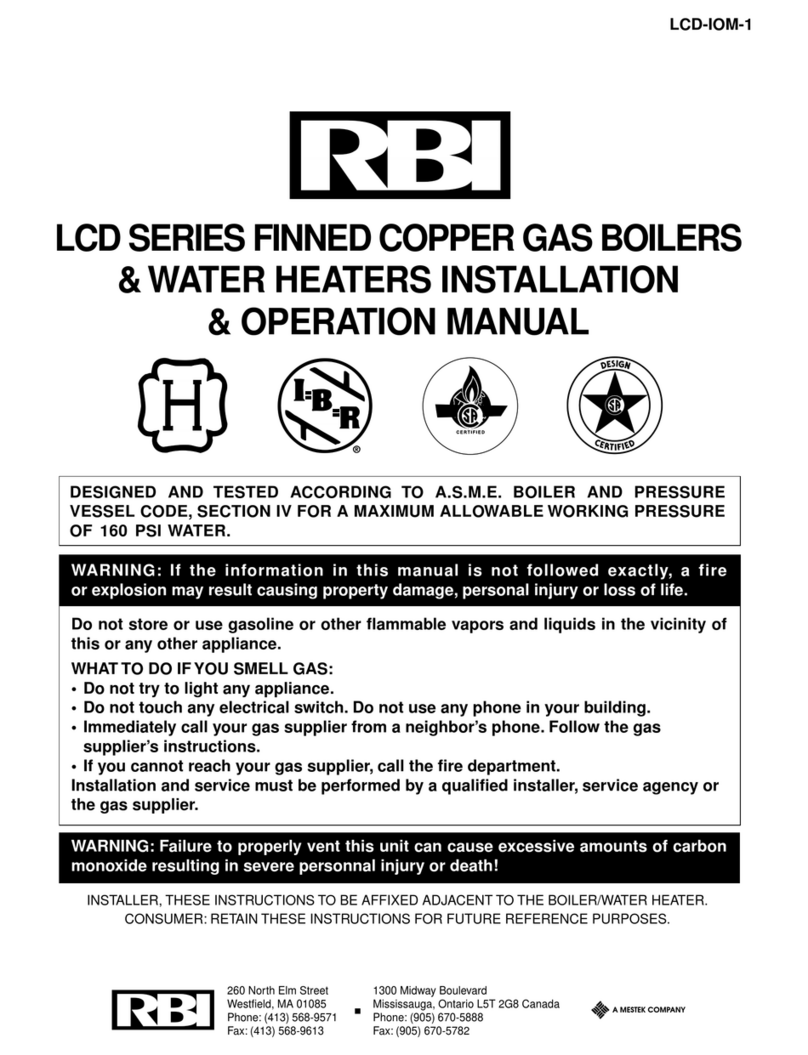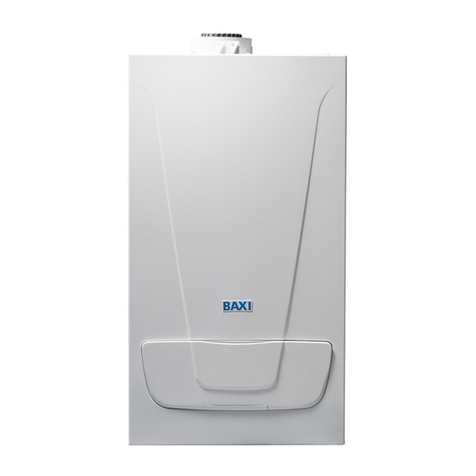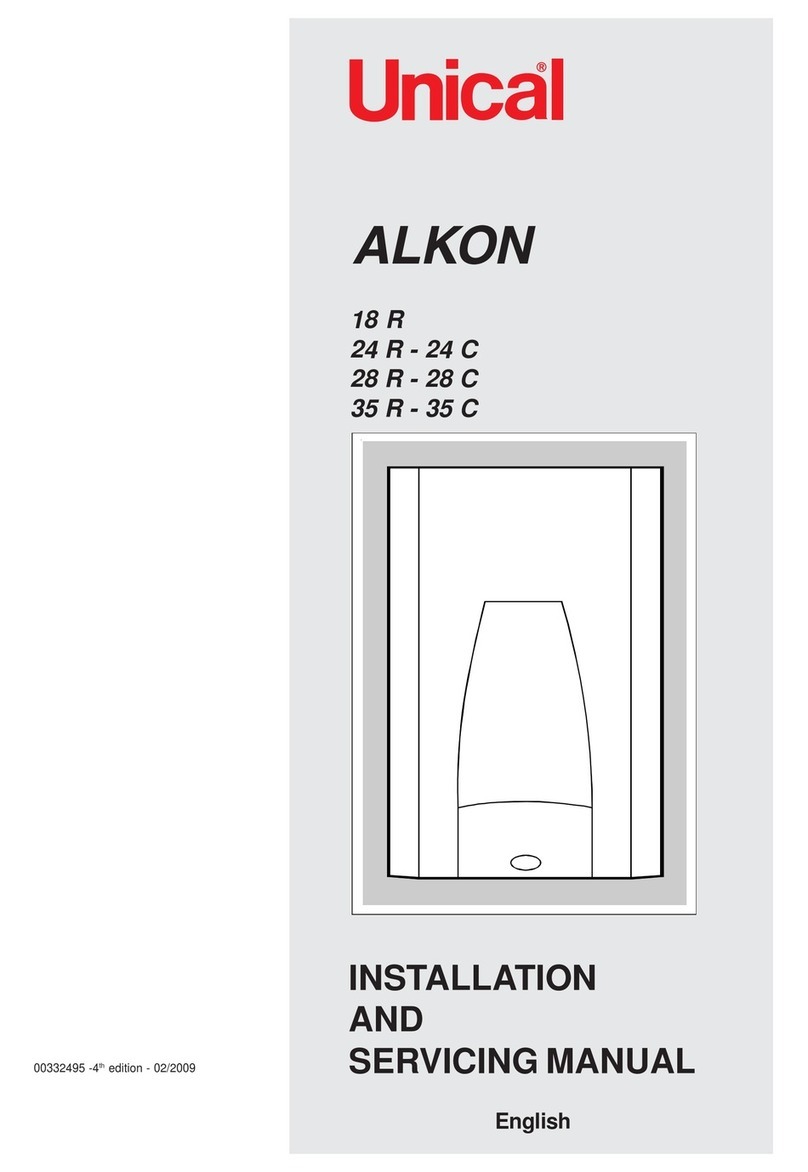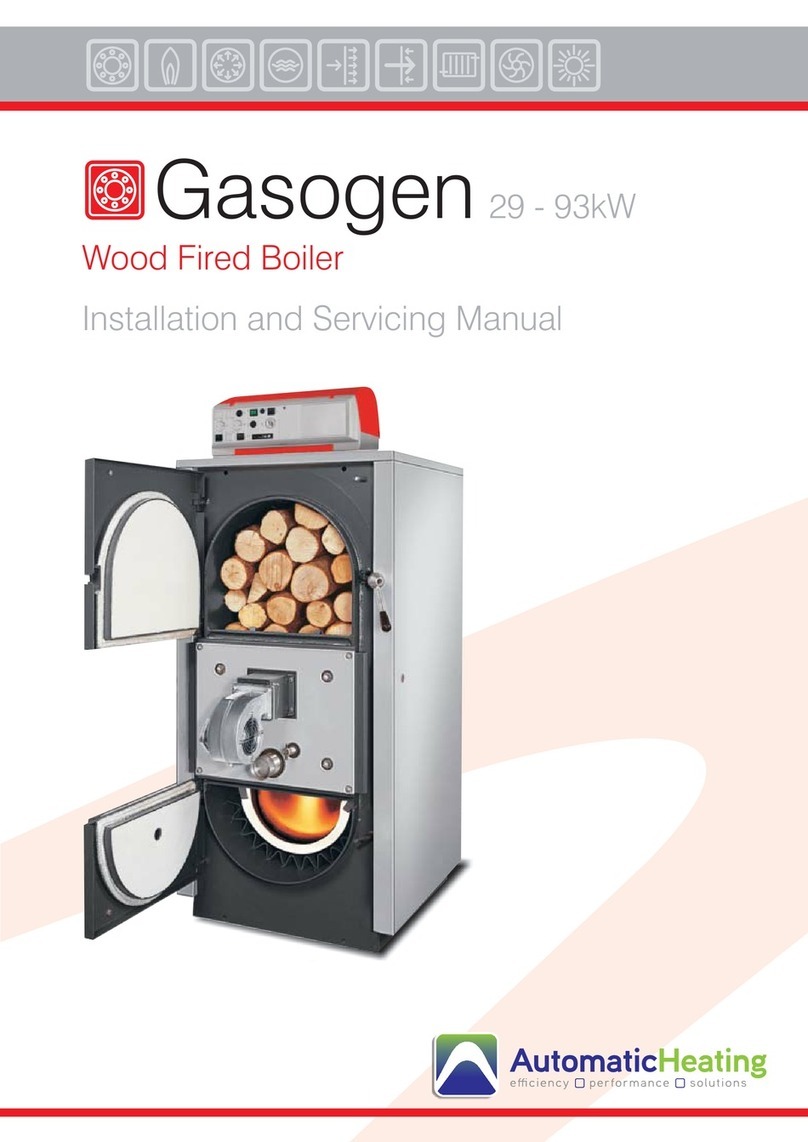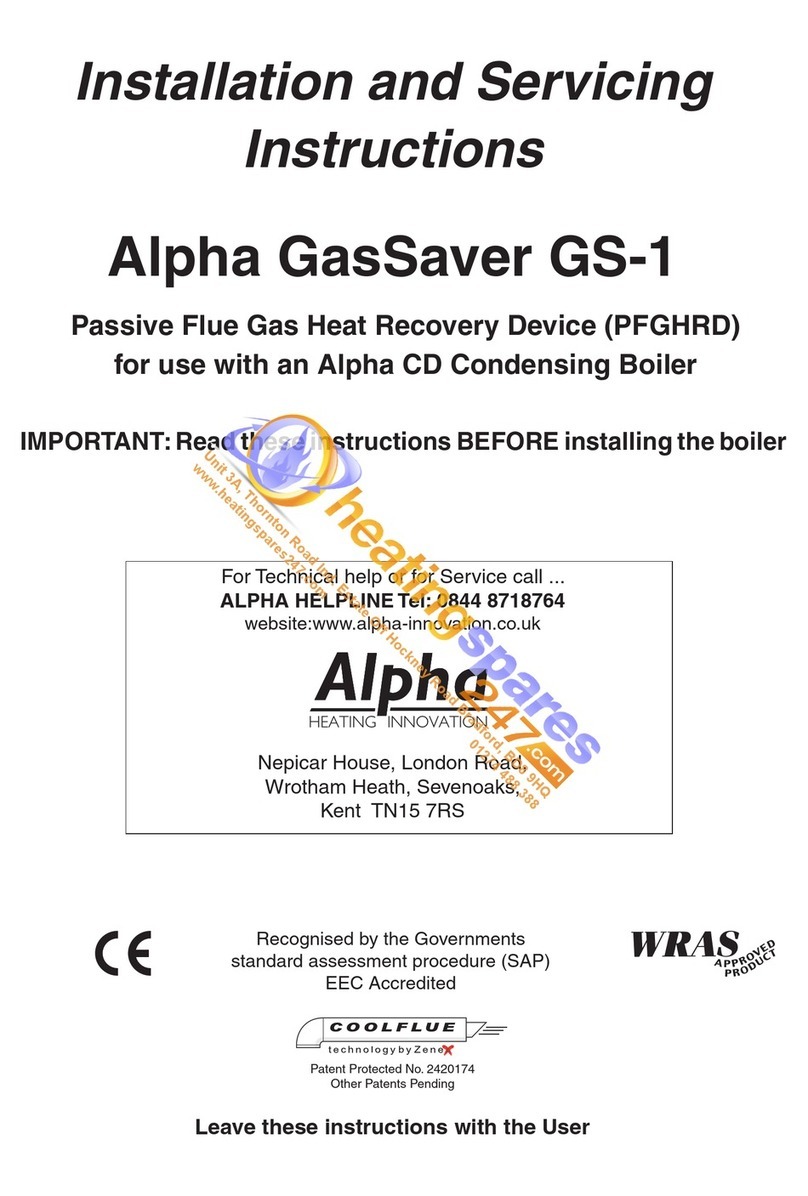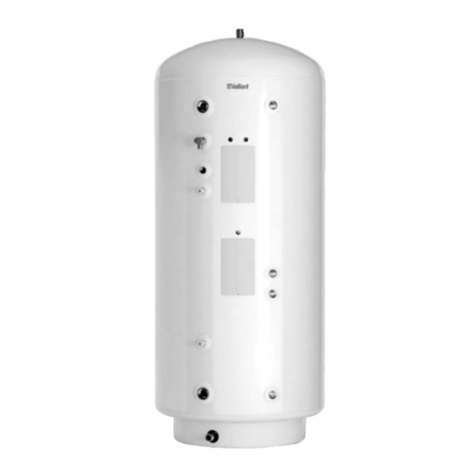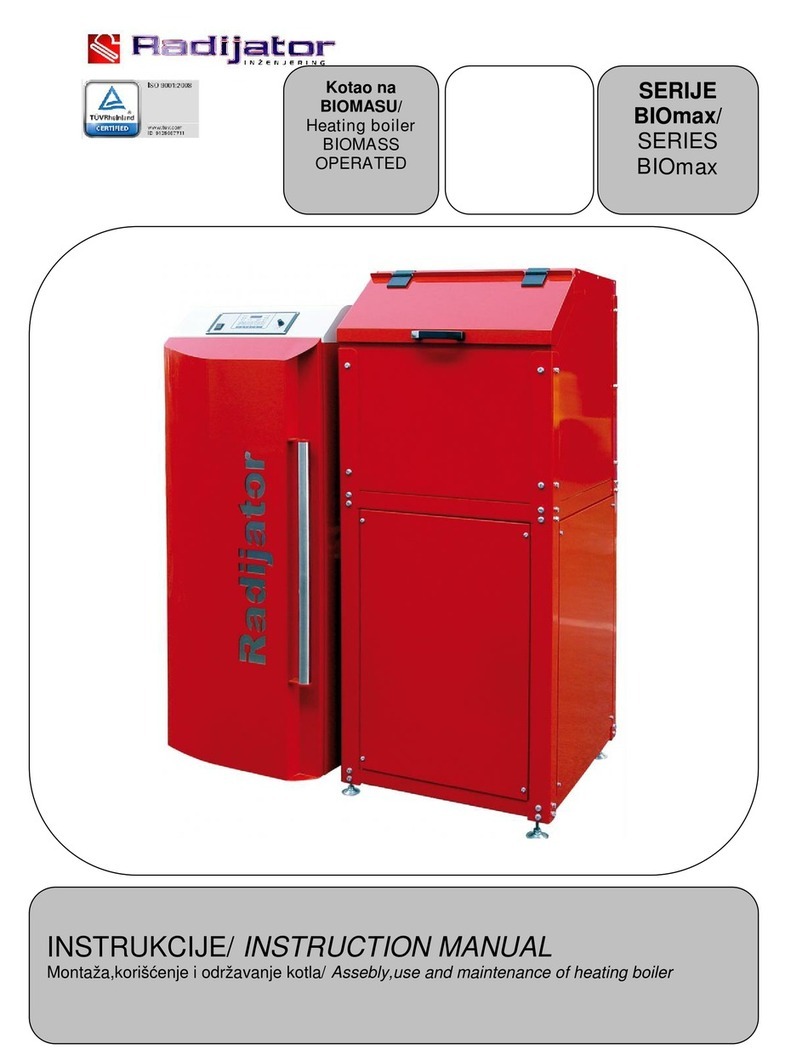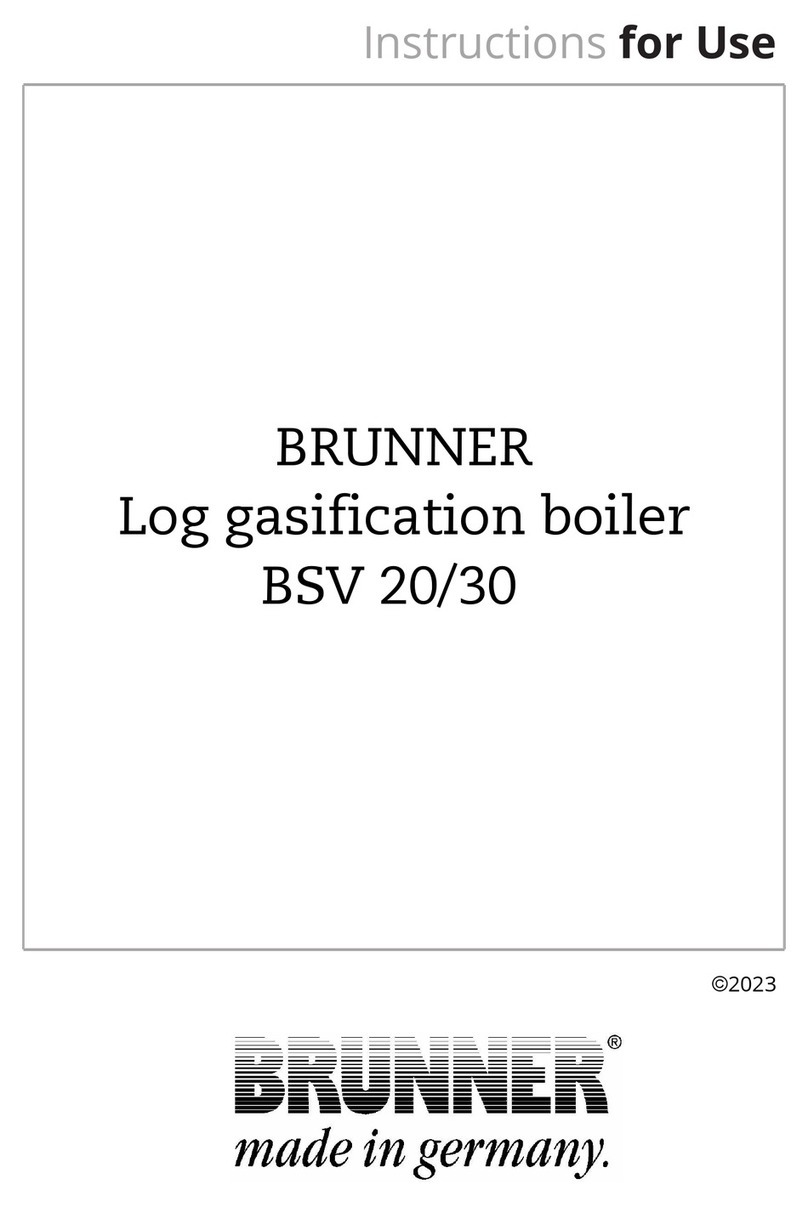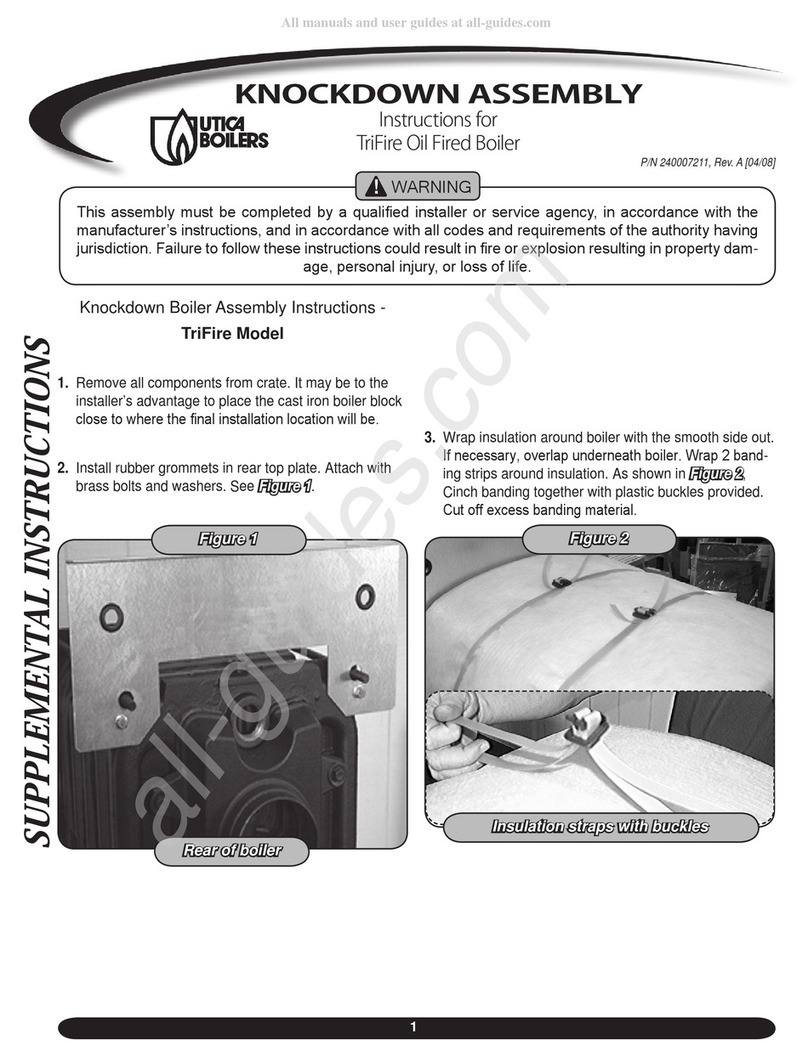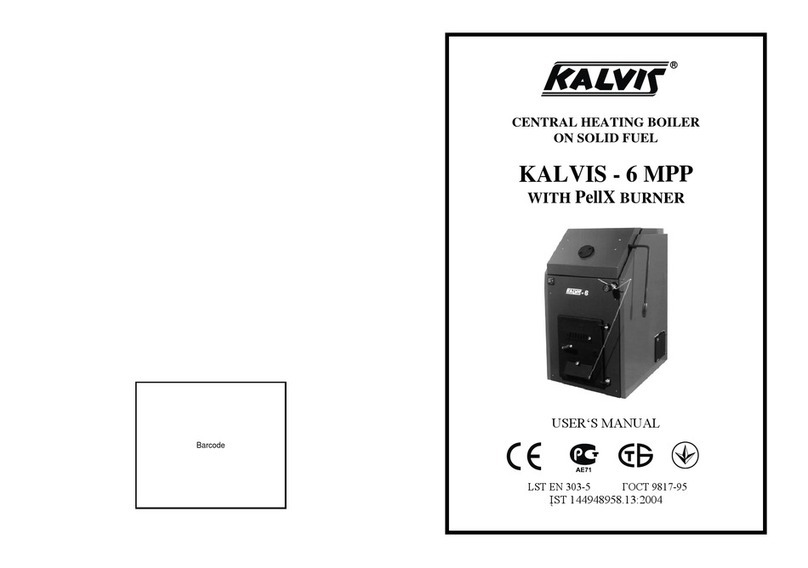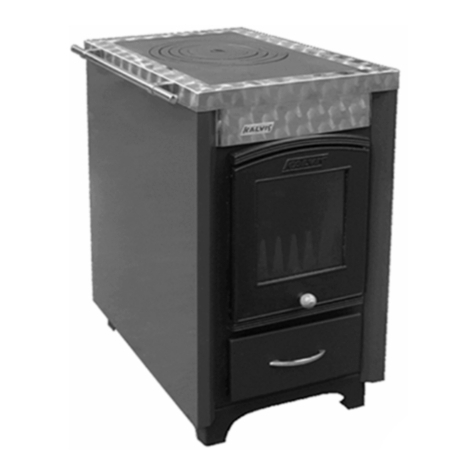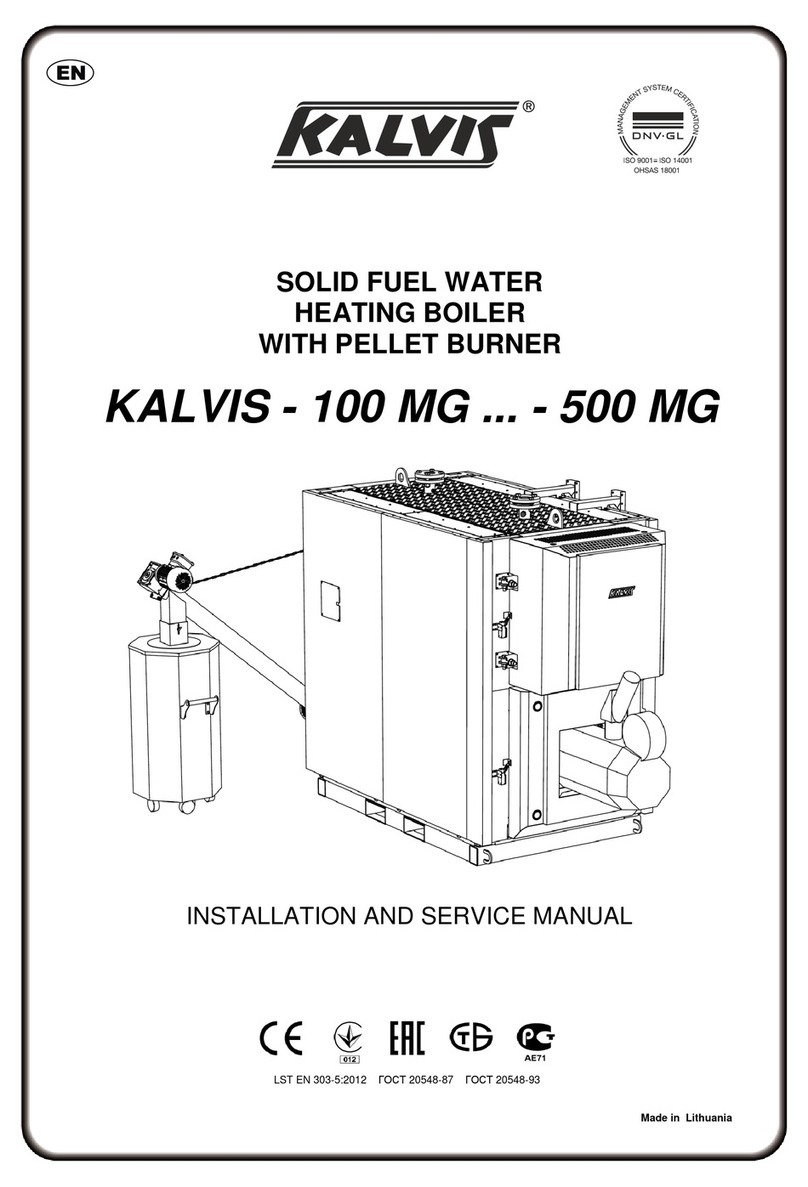- 8 -
6.1. Fire precaution
•Put the boiler on the refractory base;
•Metal tubes are used to connect boiler to chimney, these tubes have to be made of
metal sheet no thinner than 1,5 mm and covered with heat insulating material.
Warning! In the case draught in the chimney is too strong and if wood chips,
sawdust, chaff or another powdery materials are used as fuel, smoldering
unburned fuel particles (sparks) can come out of the chimney during fuel loading
or after fuel has burnt and having shaken remaining fuel.
If roof or its constructions are made of easily flammable materials or there are
similar constructions, building materials, fuel etc. found closer than 20 m from the
chimney, it is strictly prohibited to use the mentioned powdery materials!
6.2. Requirements for chimney
Chimney construction and boiler connection to chimney options see picture 3.
Requirements:
•chimney draught shall be no less than it is specified in the main technical data
table (see page 5);
•hole of the chimney shall have cross-section no less than boiler's flue cross-
section;
•boiler needs the separate chimney hole. Nothing else should be connected to the
same hole;
•if the chimney is connected with extra elbow, its cross-section cannot be less than
the cross-section of fume escape from boiler hole with bending radius no less than 100
mm;
•tube between the boiler flue and chimney shall be no longer than 1,5 m, it must be
rising towards the chimney, providing the possibility for its cleaning;
•seal the gaps at connection and chimney entrance places.
Note that:
•smoke, after getting into the chimney from the boiler flue pipe, continues cooling,
vapor, contained in the smoke, condenses by settling on the chimney walls,
especially in unheated loft and external part of the chimney;
•acids of the condensate and heat-cold erosion can disintegrate chimney in a couple
of years;
•not cleaned soot can ignite in some time and, if the chimney is unmaintained or
roofing is easily flammable, it may cause the fire.
We recommend:
•to install stainless steel insert inside the chimney. Correctly installed insert protects
chimney from condensate impact and improves draught;
•the insert shall not reduce cross-section of the chimney hole significantly;
•joints between the parts of the insert have to be sealed together (not by soldering);
•the condensate collector has to be installed in the bottom;
•fill the gap between insert and chimney walls, at least where chimney is outside
the building, with fireproof heat insulation material. Plaster the gap on the top and
cover with tin at a gradient;
